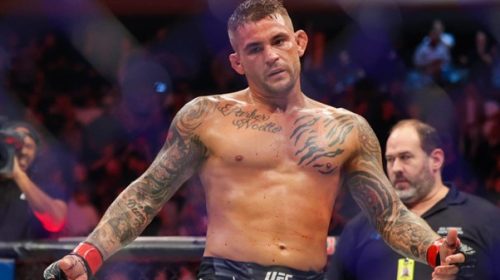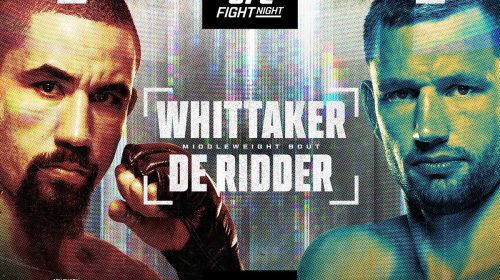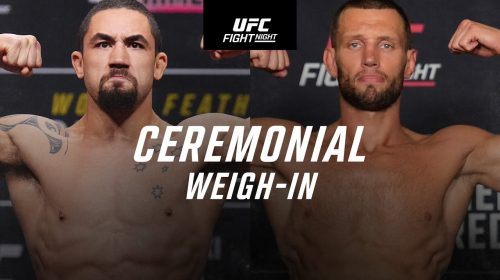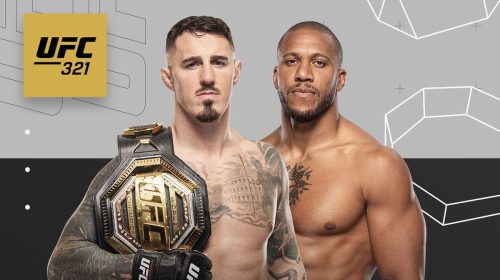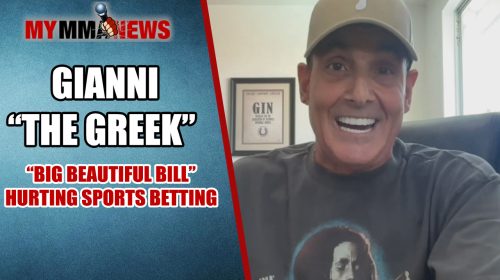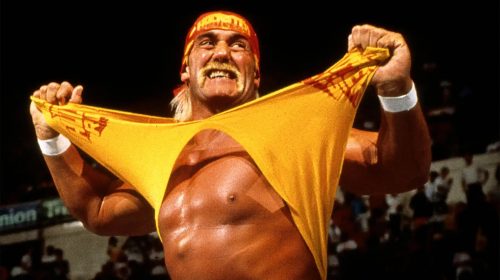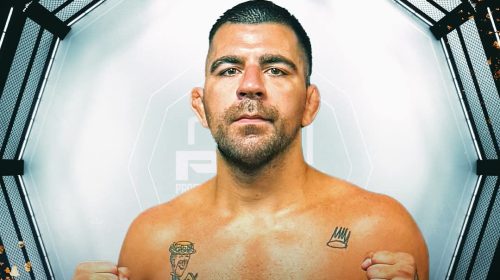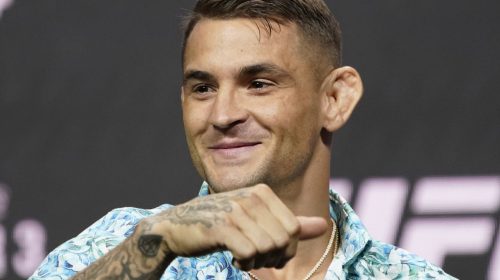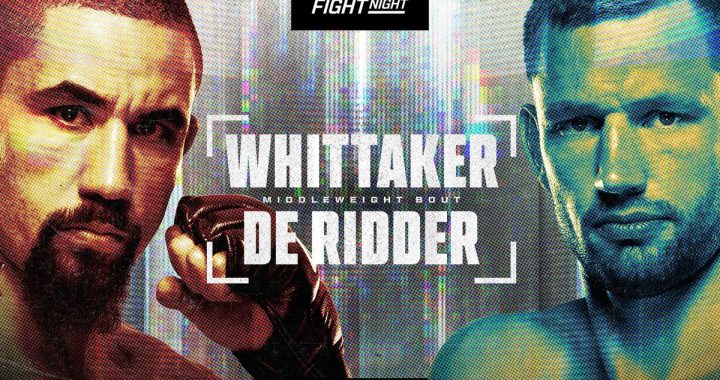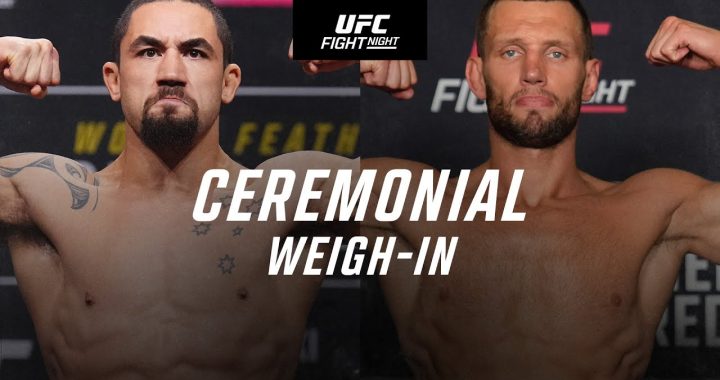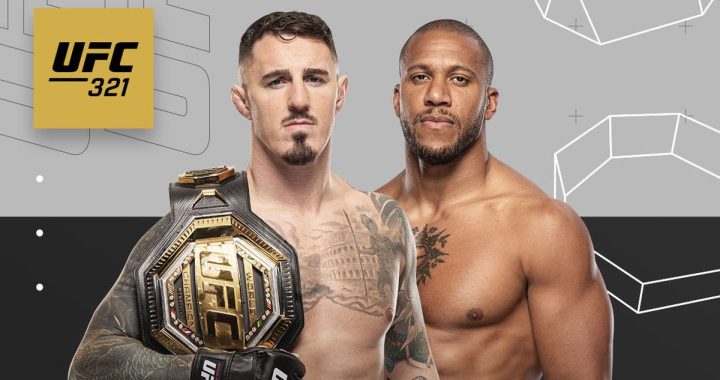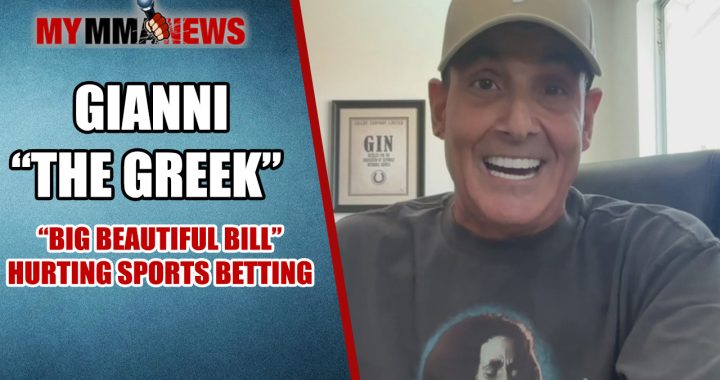
Top Five Falls From Grace In UFC History
These greats will go down in UFC history, but not before they fell…
There have been quite a few fighters at this point that have taken the hard road since losing their titles and win streaks. They just never came back the same as they had before they lost. Some fighters come back better after losing, but when someone’s at their peak, dominating everyone they face, then they lose, often times that spells the end.
Below is a list of five names that just didn’t compete the same after their respective title-losing bouts.
We call this: Top Five Falls from Grace In UFC History
1. BJ Penn (15-5-1 to 16-14-2)
 BJ Penn was called ‘The Prodigy’ for a reason, that’s exactly what he was. He earned his Brazilian Jiu-Jitsu black belt after just three years of actively training and competing, which is remarkable because it takes the average student about ten years, maybe even a little longer to acquire a black belt in the art. This made Penn the quickest American to earn a BJJ black belt in history.
BJ Penn was called ‘The Prodigy’ for a reason, that’s exactly what he was. He earned his Brazilian Jiu-Jitsu black belt after just three years of actively training and competing, which is remarkable because it takes the average student about ten years, maybe even a little longer to acquire a black belt in the art. This made Penn the quickest American to earn a BJJ black belt in history.
‘The Prodigy’ started out competing in BJJ tournaments, coming in second place at the World Jiu-Jitsu Championships as a blue belt, placing third a year later in the same tournament as a brown belt, and winning the World Jiu-Jitsu Championships as a black belt just one year after that.
That next year, Penn started fighting in mixed martial arts. The BJJ wizard quickly racked up three knockout victories in 2001 to rack up a 3-0 record, which granted him a title shot at then champion Jens Pulver. Penn knocked out the 12-1 Din Thomas when he was just 1-0, and also knocked out the 13-4-2 Caol Uno when he was just 2-0. Does ‘The Prodigy’ feel like a suiting nickname yet?
Despite being just 3-0, fighting the 11-2-1 champion, Penn was a heavy favorite going into this fight. After absolutely dominating Pulver for two rounds, almost submitting him with an armbar at the end of round two, the bell sounded, and Pulver’s arm was safe. Pulver came out and won the next three rounds, ultimately defeating Penn via majority decision (48-45, 47-47, 48-47).
Penn rebounded with a knockout victory over Paul Creighton and a unanimous decision over Matt Serra, before having a draw in his title fight rematch with Caol Uno. Penn then left the UFC to face the man most saw as the best lightweight in the sport, Takanori Gomi, and he defeated him via submission (rear naked choke) in round three.
Next is where we really saw how special Penn was, as he submitted (rear naked choke) Matt Hughes to become the UFC Welterweight Champion. He vacated his belt however, because he wanted to fight elsewhere in different types of match ups and the UFC didn’t fancy it.
His next four fights came in the K-1 promotion, where he defeated Duane Ludwig, Rodrigo Gracie, and Renzo Gracie, and lost to Lyoto Machida. That’s why the UFC didn’t want him under contract should he be fighting elsewhere, because he’s crazy enough to take a heavyweight fight with a Shotokan Karate black belt like Machida.
Returning to the UFC saw him face back-to-back defeats to Georges St-Pierre (split decision) and Matt Hughes (TKO). This brought his record to 10-4-1, and he decided it was time to go back down to his natural weight class of 155 lbs. This is when he rematched Pulver, who he defeated via submission (rear naked choke) in round two. He absolutely dominated the fight this time around.
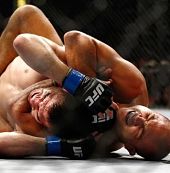 He then fought Joe Stevenson for the vacant UFC Lightweight Championship, and this was one of the most one-sided fights any of us will ever see, which was surprising because Stevenson was something truly special. Penn submitted (rear naked choke) him in round two after battering him the entire fight, and he was now the UFC Lightweight Champion.
He then fought Joe Stevenson for the vacant UFC Lightweight Championship, and this was one of the most one-sided fights any of us will ever see, which was surprising because Stevenson was something truly special. Penn submitted (rear naked choke) him in round two after battering him the entire fight, and he was now the UFC Lightweight Champion.
‘The Prodigy’ made his first title defense against Sean Sherk, who was the champion until he got stripped of his title for a failed drug test. Penn dominated this fight as well, and got the TKO finish at 5:00 of round three with a perfectly timed knee followed by some nasty uppercuts.
Penn then went back up to 170 lbs in attempt to become the first champ-champ in the history of the UFC, but fell short once again to Georges St-Pierre. He dropped back down to lightweight to defend his title twice more against Kenny Florian (rear naked choke) and Diego Sanchez (TKO), before meeting his demise in Frankie Edgar.
Some people believe he won the first Edgar fight, some think he lost, it was incredibly close. However, all three judges saw it for Edgar (50-45, 48-47, 49-46). An immediate rematch was given to Penn considering, and he was really blown out of the water this time around, as he lost 50-45 on all three scorecards.
Penn returned to welterweight to have his trilogy with Matt Hughes, who he KO’d this time in just 21 seconds. This was the last time he won a fight, and it was in 2010. Since then, he’s had a draw with Jon Fitch, which was a great, competitive fight, and he lost his last seven fights after that, making his record 0-7-1 in his last eight fights.
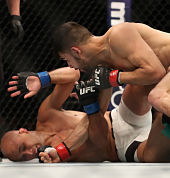 He’s still been fighting great fighters, and that may be the problem. In order, he lost to Nick Diaz, Rory MacDonald, Frankie Edgar, Yair Rodriguez, Dennis Siver, Ryan Hall, and Clay Guida. He’d even gotten submitted by Hall, and while Hall’s as crafty as they come on the mat, that’s something we thought we’d never see happen.
He’s still been fighting great fighters, and that may be the problem. In order, he lost to Nick Diaz, Rory MacDonald, Frankie Edgar, Yair Rodriguez, Dennis Siver, Ryan Hall, and Clay Guida. He’d even gotten submitted by Hall, and while Hall’s as crafty as they come on the mat, that’s something we thought we’d never see happen.
It’s unfortunate, ‘The Prodigy’ never had the prettiest record, but he was 15-5-1 at his best, around the time he won and was defending the lightweight title. He’s now 16-14-2, that’s why he’s the first spot on this list. It’s hard to watch legends go out like that, but it happens in combat sports.
His prime left him too soon, and he didn’t stay motivated throughout his career. He was just 31-years-old when everything fell apart for him. It’s too bad, but we’ll never forget ‘The Prodigy’.
2. Renan Barao (32-1-0-1 to 34-9-0-1)
 Renan ‘The Baron’ Barao is someone we were all expecting to go down as one of, if not the best fighter in history to ever do it. He came to the WEC with a record of 23-1 (1 NC), only having lost the first fight of his career by decision. He had two submission wins in the WEC, an armbar and a rear naked choke, before coming to the UFC with the rest of the roster.
Renan ‘The Baron’ Barao is someone we were all expecting to go down as one of, if not the best fighter in history to ever do it. He came to the WEC with a record of 23-1 (1 NC), only having lost the first fight of his career by decision. He had two submission wins in the WEC, an armbar and a rear naked choke, before coming to the UFC with the rest of the roster.
He then defeated former two-time WEC Featherweight Champion Cole Escovedo via unanimous decision in his UFC debut, before steamrolling through Brad Pickett. He caught Pickett with a barrage of punches, and once Pickett dropped, Barao followed him to the ground and proceeded to finish the fight with a rear naked choke.
Barao next fought Scott Jorgensen, who he picked apart for three rounds and was awarded the unanimous decision victory. He was then chosen to step in and face Urijah Faber for the interim UFC Bantamweight Championship when then champion Dominick Cruz was injured, and he won that fight via unanimous decision.
Next came his first title defense, where he defeated the surging Michael McDonald via submission (arm-triangle choke) in round four, before TKO’ing former WEC Bantamweight Champion Eddie Wineland in round two. He defended the interim title twice before being promoted to the undisputed champion.
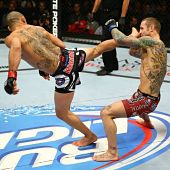 His first fight as the undisputed champion showed him in a rematch with Urijah Faber, as he TKO’d him in the first round this time around. By this point, Barao was 32-1 (1 NC), and he was seemingly unstoppable. He’d finally passed Jose Aldo on the pound-for-pound list for the No. 1 spot.
His first fight as the undisputed champion showed him in a rematch with Urijah Faber, as he TKO’d him in the first round this time around. By this point, Barao was 32-1 (1 NC), and he was seemingly unstoppable. He’d finally passed Jose Aldo on the pound-for-pound list for the No. 1 spot.
It all came crashing down in his next fight however when he faced TJ Dillashaw. Barao was scheduled to face Raphael Assuncao, but Assuncao was forced out of the bout with an injury and replaced by Dillashaw. This fight took a literal ten years off his life, he hasn’t even been close to the same since.
It was a competitive fight for about four minutes, until Dillashaw caught him with a perfectly timed and placed overhand right and remained on top pounding away for the rest of the round. The entire rest of the fight showed Dillashaw just completely out-classing Barao, he never fully recovered from that shot in the first round.
Ultimately, Dillashaw finished Barao via TKO midway through round five and took his belt. He was given an immediate rematch, though he was hospitalized the day of weigh ins and was forced to pull out.
Barao returned to face Mitch Gagnon in a very lackluster fight, we could evidently see he wasn’t the same, though he won the fight via submission (arm-triangle choke) in round three. He then fought Dillashaw again in attempt to regain his throne, but was TKO’d in round four this time.
 ‘The Baron’ then went up to featherweight and had a Fight of the Night performance against Jeremy Stephens, though he lost via unanimous decision. Stephens is a massive featherweight with vicious power, and Barao’s a natural bantamweight, it wasn’t the best match up he could’ve got.
‘The Baron’ then went up to featherweight and had a Fight of the Night performance against Jeremy Stephens, though he lost via unanimous decision. Stephens is a massive featherweight with vicious power, and Barao’s a natural bantamweight, it wasn’t the best match up he could’ve got.
He then defeated Phillipe Nover via unanimous decision, before having a 140 lb catchweight bout with Aljamain Sterling, a fight he lost via unanimous decision. He then lost decisions to Brian Kelleher and Andre Ewell, before being knocked out by Luke Sanders, and losing another unanimous decision to Douglas Silva de Andrade.
After starting out his career with a 32-1 (1 NC) record, being a four-time UFC champion, he’s gone 2-8 since, and is on a five-fight losing streak.
He also missed weight in two of his last three fights, and the 140 lb catchweight with Sterling was supposed to be a bantamweight fight, that’s why he’s No. 2 on this list. Many of us were expecting him to go down potentially as the best ever, and he was only 27-years-old at the time he first fought Dillashaw.
3. Johny Hendricks (16-2 to 18-8)
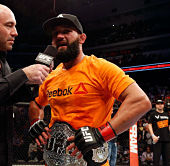 Johny ‘Bigg Rigg’ Hendricks was one of the most dominant welterweight fighters we’d ever seen for a while there, but it just didn’t stay that way. After going 2-0 in the WEC, he was signed over to the UFC to face The Ultimate Fighter 7 winner Amir Sadollah, who he TKO’d in just 29 seconds.
Johny ‘Bigg Rigg’ Hendricks was one of the most dominant welterweight fighters we’d ever seen for a while there, but it just didn’t stay that way. After going 2-0 in the WEC, he was signed over to the UFC to face The Ultimate Fighter 7 winner Amir Sadollah, who he TKO’d in just 29 seconds.
Hendricks then won his next three fights over the 7-0 Ricardo Funch, the 15-3 TJ Grant, and the 12-1 Charlie Brenneman, improving his record to 9-0, before losing his next fight to longtime UFC veteran Rick Story. After losing to Story however, he went on a tear, winning his next six fights with three knockouts.
He TKO’d TJ Waldburger in round one, won a split decision over Mike Pierce, KO’d Jon Fitch in just 12 seconds, won a split decision over Josh Koscheck, KO’d Martin Kampmann in 46 seconds, and won a unanimous decision over Carlos Condit. Aside from his two split decisions, which were both incredibly close fights, he looked next to unstoppable.
Pierce was severely underrated, and Koscheck is one of the best 170 lb fighters ever to had never won a belt. This awarded him a shot against then UFC Welterweight Champion Georges St-Pierre, who he took to the distance in an absolute classic. Many thought he won this fight, though he lost via split decision.
 However, St-Pierre vacated the belt and only fought once since, which was four years later, leaving Hendricks to face Robbie Lawler for the vacant UFC Welterweight Championship. This fight was pretty close, considering it was clearly two rounds a piece going into round five, but Hendricks was able to secure a takedown and remain on top for almost all of round five.
However, St-Pierre vacated the belt and only fought once since, which was four years later, leaving Hendricks to face Robbie Lawler for the vacant UFC Welterweight Championship. This fight was pretty close, considering it was clearly two rounds a piece going into round five, but Hendricks was able to secure a takedown and remain on top for almost all of round five.
As many people predicted, ‘Bigg Rigg’ was now the UFC’s 170 lb champion. Everyone expected him to hold the belt for some time, but he lost it in his very next fight in a rematch to Lawler via split decision.
Lawler had two fights since fighting Hendricks the first time, while it was an immediate rematch for Hendricks, considering he needed to have surgery after their first encounter.
This brought his record to 16-3, and his last two defeats were split decisions in five round title fights, he was still at the very top of the welterweight division. He then out-wrestled Matt Brown to a unanimous decision victory, and directly after this is the time he really started to fall off.
Hendricks was TKO’d in round one by Stephen Thompson, the first time he’d been finished in his career. He then lost unanimous decisions to Kelvin Gastelum and Neil Magny, bringing his record from 17-3 to 17-6. ‘Bigg Rigg’ also missed weight for those last two fights.
This is when he decided to move up to 185 lbs, which was never the weight class for him. He’s only 5’9” with a 69” reach. He did defeat multiple-time world champion Hector Lombard via unanimous decision in his middleweight debut, and it was actually a good performance from him. He used his superior striking to out-point Lombard throughout the fight.
After this however, he lost his last two fights to Tim Boetsch and Paulo Costa, both via TKO in round two. He also missed weight for the Boetsch fight. It seems his motivation fell off after losing his rematch to Lawler, because he just wasn’t the same after it.
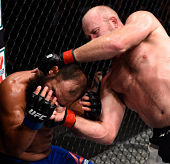 He missed weight three times in his last five fights, one even in a weight class above. This is when he announced his retirement from MMA, and he’s had one Bare Knuckle fight since, where he was knocked out early in round two by Dakota Cochrane.
He missed weight three times in his last five fights, one even in a weight class above. This is when he announced his retirement from MMA, and he’s had one Bare Knuckle fight since, where he was knocked out early in round two by Dakota Cochrane.
Hendricks states that it was the IV ban that really hindered him, which came into play not long after losing his rematch with Lawler. He stated that it helped aid him in recovery, and that without it, he wasn’t the same.
The thing is though, IV’s don’t make a difference in making weight. You have to make the weight first, then you’d use the IV. Some fighters used IV’s to help flush banned substances from their systems, and there’s been speculation on that with Hendricks.
He used to just touch his opponents and they’d go flying, not to mention his wrestling prowess, where he was a four-time NCAA Division I All-American, two-time National Champion, one-time second place, and one-time fifth place. That kind of fell off too, it’s a wonder what really happened to Johny Hendricks.
4. Anderson Silva (33-4 to 34-10-0-1)
 Anderson ‘The Spider’ Silva was universally considered the greatest mixed martial arts fighter of all time for nearly seven years. He made his UFC debut with a 17-4 record, with his most recent defeat coming via DQ when he knocked Yushin Okami out with a kick from his guard while Okami was considered a downed opponent, even though he was on top of Silva.
Anderson ‘The Spider’ Silva was universally considered the greatest mixed martial arts fighter of all time for nearly seven years. He made his UFC debut with a 17-4 record, with his most recent defeat coming via DQ when he knocked Yushin Okami out with a kick from his guard while Okami was considered a downed opponent, even though he was on top of Silva.
Before coming to the UFC, he’d already made his championship abilities known, as he won the Shooto Middleweight Championship (168 lbs), as well as the Cage Rage Middleweight Championship. He vacated his Shooto belt, considering he didn’t fight for the promotion again after winning it, and he defended his Cage Rage title twice.
Silva won each title via unanimous decision, and he knocked his opponents out in each Cage Rage title defense, one of which was over UFC veteran and dangerous striker himself Jorge Rivera. He also had wins over Fabricio Camoes, Roan Carneiro, former UFC Welterweight Champion Carlos Newton, and former UFC light-heavyweight title challenger Jeremy Horn before making his UFC debut.
He showed moments of brilliance early on, but it wasn’t until he came to the UFC that he really put everything together consistently. In Silva’s UFC debut, he knocked out Chris Leben in just 49 seconds, landing 17 of his total 20 strikes thrown.
Leben was 15-1 overall in his career, and 5-0 in the UFC at the time, and Silva made it one of the most one-sided fights ever still to this day 14 years later. He was granted a title shot against Rich Franklin following his impressive performance in his promotional debut.
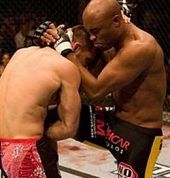 Franklin was 22-1 (1 NC) in his career, only having lost to Lyoto Machida in a smaller Japanese promotion, which included a 7-0 run in the UFC. Six of those wins were finishes with five knockouts, and he’d won the UFC Middleweight Championship, and defended it twice prior to fighting Silva.
Franklin was 22-1 (1 NC) in his career, only having lost to Lyoto Machida in a smaller Japanese promotion, which included a 7-0 run in the UFC. Six of those wins were finishes with five knockouts, and he’d won the UFC Middleweight Championship, and defended it twice prior to fighting Silva.
‘The Spider’ made quick work of Franklin as well, knocking him out at 2:59 of round one. This is where we saw how effective Silva’s Thai clinch is. Once he had Franklin locked in it, he couldn’t get out, and he just got battered. We knew at this point, we have a serious talent at 185 lbs.
Silva next submitted BJJ black belt Travis Lutter with a triangle choke in round two, though it was considered a non-title fight because Lutter missed weight. His first official title defense came when he fought seven-time Pancrase Middleweight Champion Nate Marquardt, who was 4-0 in the UFC at the time.
Silva TKO’d Marquardt at 4:50 of round one, and his first title defense was out of the way. He then had a rematch with Franklin, who went 2-0 since losing to Silva the first time. The result was the same however, as Silva knocked him out with his knees yet again, only this time at 1:07 of round two.
Next came a title defense against Dan Henderson, one of the most accomplished combat sports athletes of all time. Henderson was the PRIDE champion at both welterweight (185 lbs) and middleweight (205 lbs), which was a huge deal. Being a double champ of an organization like PRIDE, that’s something only the best of the best could do.
Henderson was also an NCAA Division I wrestler and an Olympic Greco-Roman wrestler. ‘Hendo’ took Silva down about one minute into round one and remained on top ground-and-pounding him for the rest of the round. ‘The Spider’ was wise to Henderson’s takedown attempt in round two however, as he stuffed it and landed a barrage of strikes.
Once he had Henderson hurt, he continued hitting him from half guard, then from top turtle, before taking his back and submitting him with a rear naked choke at 4:52 of round two. At this point, Silva had defeated three multiple-time world champions in his last three appearances.
He next made his light-heavyweight debut against vicious knockout artist James Irvin, who was 3-1 in his last four with the only defeat coming from an injury. He had a 14-4 (1 NC) record with ten knockouts, seven of which were via KO. Silva steamrolled right through Irvin, securing the KO victory in just 61 seconds.
Patrick Cote was the next to challenge for his middleweight title, who he defeated via TKO (injury) in round three. It was an uneventful fight where Silva just didn’t let Cote touch him, and Cote’s leg eventually gave out. Nonetheless, it was another title defense for ‘The Spider’.
The 25-4 champion then fought the 14-1 Thales Leites, one of the most dangerous grapplers in the entire sport. Leites was 5-1 in the UFC, which included a five-fight win streak with three submissions going into his fight with Silva.
‘The Spider’ picked Leites apart throughout the fight, as he chewed his leg up, landing 51 leg kicks, cruising to a unanimous decision victory. He decided to go up to 205 lbs again after this, where he KO’d the former UFC Light-Heavyweight Champion and The Ultimate Fighter I winner Forrest Griffin at 3:23 of round one.
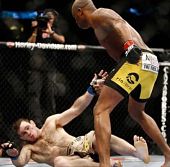 Griffin had just lost his title to Rashad Evans about eight months prior; had Silva gone up and fought him one year earlier, he would have been the UFC’s first two-weight champion, rather than Conor McGregor. Next he fought another leading BJJ fighter in the sport, only this time, he was fighting the best grappler in the sport, not just one of the best.
Griffin had just lost his title to Rashad Evans about eight months prior; had Silva gone up and fought him one year earlier, he would have been the UFC’s first two-weight champion, rather than Conor McGregor. Next he fought another leading BJJ fighter in the sport, only this time, he was fighting the best grappler in the sport, not just one of the best.
Demian Maia was 6-1 in the UFC at the time with five submission victories, but this fight didn’t deliver at all. Silva cruised to another unanimous decision in this performance, but that’s all he did. He stuffed Maia’s takedown attempts and out-struck him 62-11 in total strikes.
Next came a fight with Chael Sonnen, who though had a record of 26-10-1, gave Silva his toughest fight ever. Sonnen took him down in each round and viciously beat on him throughout the fight. He had two 10-8 rounds in this fight, and he even dropped Silva with a punch once he had him worried enough about the takedown.
However, Silva pulled it off in the last two minutes. After being absolutely dominated for 23 straight minutes, Silva threw up a triangle choke, securing the finish at 3:10 of round five. Silva went into this fight with a rib injury, and Sonnen later tested positive for elevated testosterone levels.
Vitor Belfort was the next man to challenge Silva for his belt, and this was a very highly anticipated fight. Though Belfort was 19-8, he was on a five-fight win streak with four knockouts, and he’d only ever lost to the best of the best. He’d also never lost a stand up fight, and Silva’s only lackluster performances were both against premier grapplers.
Belfort’s boxing, power, and hand speed had always been a problem for his opponents, not for Silva though. After a feeling out process, where next to nothing happened, Silva KO’d Belfort with a front kick, which landed on his chin, to get the knockout victory at 3:25 of round one.
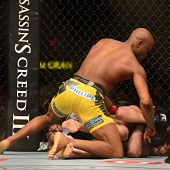 He then rematched Yushin Okami and Chael Sonnen in his next two fights, and won both via TKO in round two. He proved once again that he’s better than Okami, and though he got taken down and held on his back for the entirety of round one in the Sonnen rematch, he adjusted beautifully and came out on top.
He then rematched Yushin Okami and Chael Sonnen in his next two fights, and won both via TKO in round two. He proved once again that he’s better than Okami, and though he got taken down and held on his back for the entirety of round one in the Sonnen rematch, he adjusted beautifully and came out on top.
Silva went up to 205 lbs once more, as he took on The Ultimate Fighter I finalist Stephan Bonnar. Though Bonnar was never the best, or never even one of the very top guys, he’d only ever lost to current or former champions, and he’d never been finished.
He had a TKO loss that came from a cut, but avenged that defeat in an immediate rematch. Silva just toyed with him the entire fight, before pushing Bonnar into the cage, only to add more impact as Bonnar bounced off the cage right into Silva’s knee, which landed directly on Bonnar’s sternum.
Silva ended up becoming the first man to truly finish Bonnar, and he did so with ease at 4:40 of round one. Bonnar was also assumed to be abusing PED’s at this time, and that only adds to how special Silva’s abilities were.
PED’s aid in toughness, as well as many other things. Don’t believe it? Watch Mark Hunt’s two fights with Antonio Silva, one of which Silva was on TRT, the rematch of which he wasn’t.
This was the last time we saw ‘The Spider’ as we knew him. He taunted his next challenger a little too much, and that was it, Chris Weidman was the new UFC Middleweight Champion. Silva’s next fight was a rematch with Weidman, and this is where his horrific leg injury happened.
He came back just over a year later and defeated Nick Diaz via unanimous decision, though the result was overturned as he failed his post-fight drug test. He again came back just over a year later, only to lose a unanimous decision to Michael Bisping.
His Bisping fight was quite controversial; he knocked him out momentarily at the end of round three, and it wasn’t stopped, and it’s arguable he won three of those five rounds. Nonetheless, he was now 0-3 (1 NC) in his last four after starting his UFC career out at 16-0.
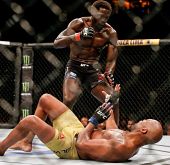 Silva then stepped in on three days notice to fill in for Jon Jones to fight Daniel Cormier at UFC 200, and lost that fight via unanimous decision as well. Next he had a back-and-forth fight with Derek Brunson, and while most scored the fight for Brunson, Silva was awarded the unanimous decision victory.
Silva then stepped in on three days notice to fill in for Jon Jones to fight Daniel Cormier at UFC 200, and lost that fight via unanimous decision as well. Next he had a back-and-forth fight with Derek Brunson, and while most scored the fight for Brunson, Silva was awarded the unanimous decision victory.
Now Silva’s on another losing streak, having lost his last two fights to Israel Adesanya and Jared Cannonier, the Cannonier fight of which his leg was injured again. He’ll be fighting Uriah Hall on October 31 in his final fight.
One crazy thing about Silva, he was 31-years-old at time of his UFC debut. That means his entire prime was from 31-years-old to 39-years-old, which is almost unheard of, especially someone who relied on agility, speed, and precision his entire career.
5. Chuck Liddell (20-3 to 21-9)
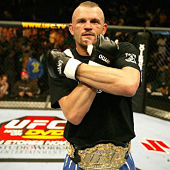 Chuck ‘The Iceman’ Liddell is a true legend of the sport, everyone on this list is, but he’s really the one that initially got eyes on this sport. Royce Gracie started it out, Ken Shamrock helped, then Randy Couture, Tito Ortiz, and Vitor Belfort came along and brought some attention with them, but Liddell was something special.
Chuck ‘The Iceman’ Liddell is a true legend of the sport, everyone on this list is, but he’s really the one that initially got eyes on this sport. Royce Gracie started it out, Ken Shamrock helped, then Randy Couture, Tito Ortiz, and Vitor Belfort came along and brought some attention with them, but Liddell was something special.
He’d acquired a 20-2 record in kickboxing, as well as black belts in Koei-Kan Karate and Kajukenbo. He was also an NCAA Division I wrestler, and could sprawl on just about anyone that ever tried to take him down. After an initial 2-1 UFC run, Liddell won the IFC Light-Heavyweight Championship, bringing his record to 5-1 before coming back to the UFC.
He then won his next seven fights, six in the UFC, and one in PRIDE, with wins over Jeff Monson (UD), Kevin Randleman (KO), Guy Mezger (KO), Murlio Bustamante (UD), Amar Suloev (UD), Vitor Belfort (UD), and Renato Sobral (KO).
This granted him a shot at the interim UFC Light-Heavyweight Championship, a fight he lost to Randy Couture. Liddell then went back to PRIDE and KO’d Alistair Overeem, before losing to Rampage Jackson. Once returning to the UFC is when ‘The Iceman’ went on that legendary tear through his division.
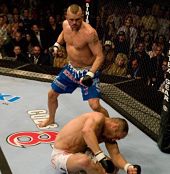 Liddell defeated Tito Ortiz and Vernon White, before getting another crack at Randy Couture. He won the Couture rematch to become the UFC Light-Heavyweight Champion, and defended it against Jeremy Horn, Couture in their trilogy, Sobral in their rematch, and Ortiz in their rematch. All seven of these fights ended via knockout as well.
Liddell defeated Tito Ortiz and Vernon White, before getting another crack at Randy Couture. He won the Couture rematch to become the UFC Light-Heavyweight Champion, and defended it against Jeremy Horn, Couture in their trilogy, Sobral in their rematch, and Ortiz in their rematch. All seven of these fights ended via knockout as well.
However, this was the end of ‘The Iceman’ as we knew him, his iron chin started failing him, and his sprawl-and-brawling style didn’t work as well considering. You see, Liddell was never the sharpest striker, he was never the most athletic, but he’d take two to give one, and as hard as he hit, it worked out for him in his prime years.
Liddell lost his next two fights to Rampage Jackson via TKO in their rematch, as well as Keith Jardine via split decision. The Jardine fight was close, and Liddell to this day thinks he did enough to win that fight. Nonetheless, he’d just gone from the 20-3 vicious knockout artist and multiple-time world champion to 20-5.
There had been talk of Liddell fighting Wanderlei Silva for so long at this point, given Silva was in PRIDE and he and Liddell had come close to fighting a few times. Well, it finally happened in his next fight, and while they were both past their peaks, this fight absolutely delivered and was the 2008 Fight of the Year. Liddell ultimately won the fight via unanimous decision.
 Liddell spent his next three fights being knocked out by Rashad Evans, Mauricio Rua, and Rich Franklin, before calling it quits. It’s always hard to see legends go out this way, but it almost always happens. As we all know, Liddell came back eight-and-a-half years later to again fight Tito Ortiz, and he was KO’d in round one.
Liddell spent his next three fights being knocked out by Rashad Evans, Mauricio Rua, and Rich Franklin, before calling it quits. It’s always hard to see legends go out this way, but it almost always happens. As we all know, Liddell came back eight-and-a-half years later to again fight Tito Ortiz, and he was KO’d in round one.
That was Ortiz’s first standing knockout ever, the first knockout win he ever had that didn’t come from ground-and-pound. Liddell looked slow, uncoordinated, and really should have just never came back. His career ended a decade ago, and it didn’t end on a good note at all.
From BJ Penn being perhaps the most promising fighter we’d ever seen, to him having a very short lived prime, losing it at just 31-years-old. Renan Barao was just 27-years-old when TJ Dillashaw completely ruined his career, and we never thought he’d lose.
There’s Johny Hendricks, who once USADA came in, he just wasn’t the same. Either he couldn’t do things he was doing prior, or his motivation just left him. Either way, his career suffered badly. He was only 31-years-old when his prime left him too, and wrestlers are generally at their best in MMA while they’re in their mid-thirties.
Anderson Silva, that’s another guy we never thought would lose, but father time catches up with everyone. Speaking of father time catching up, lastly is Chuck Liddell. All those years of taking bombs to his chin didn’t help him later on, but at least he had a long career at his best, as he was 37-years-old before he started losing.
Who’s career do you think took the biggest hit in UFC history, once they didn’t have it anymore?


